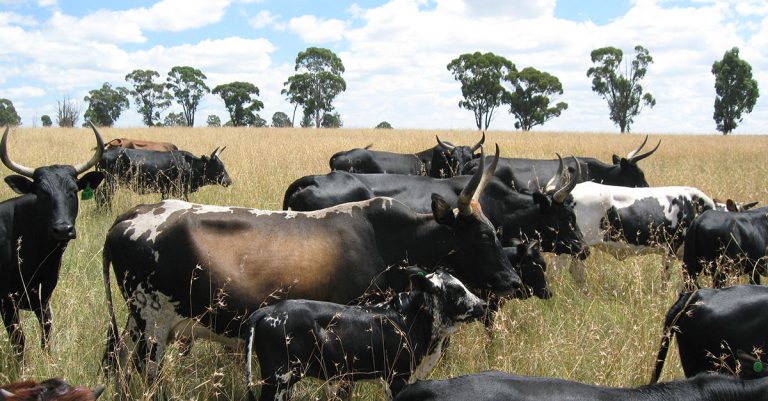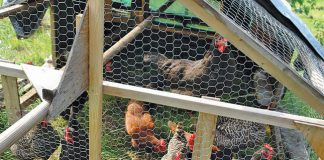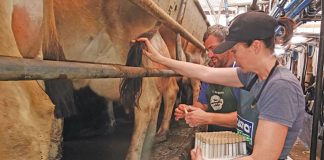
Photo: Wikimedia Commons
Bruised meat on carcasses, usually caused by horn blows during transport or in a cattle crush, is condemned for human consumption at abattoirs, causing great financial loss. Dehorning cattle will help prevent this.
Dehorned cattle can also be fed more easily, and there is less interference from dominant animals.
In addition, dehorned animals take up less space. This means that more can fit into a truck, more can be accommodated in a kraal, and more can stand around a trough to feed or drink.
Methods
There are several ways to remove an animal’s horns. Two methods are suitable for smallholders who have only a few cattle.
The caustic stick method
Apply caustic soda (in stick or paste form) to the horn bud before the calf is 10 days old. Be sure to keep the calf out of the rain after treatment, as the caustic soda can run down and hurt its face. Moreover, when the calf suckles, the caustic soda can harm the cow’s udder.
The hot iron method
When the calf is three to six weeks old, burn the horn-forming tissue at the base of the horn bud with a debudding iron heated by gas or fire.
Heat the iron until dull red, press it onto the bud, and move it slowly in a circular motion for about 10 seconds. Hold the calf firmly to ensure the best results.
If the bud is too large, first remove the tip with a sharp pocket knife.
Other methods are not recommended, as these leave open wounds, which can lead to complications. Horn stubs may also develop.
In adult cattle, dehorning is best performed by a veterinarian, as mistakes can lead to fatalities.
Source: www.dalrrd.gov.za













